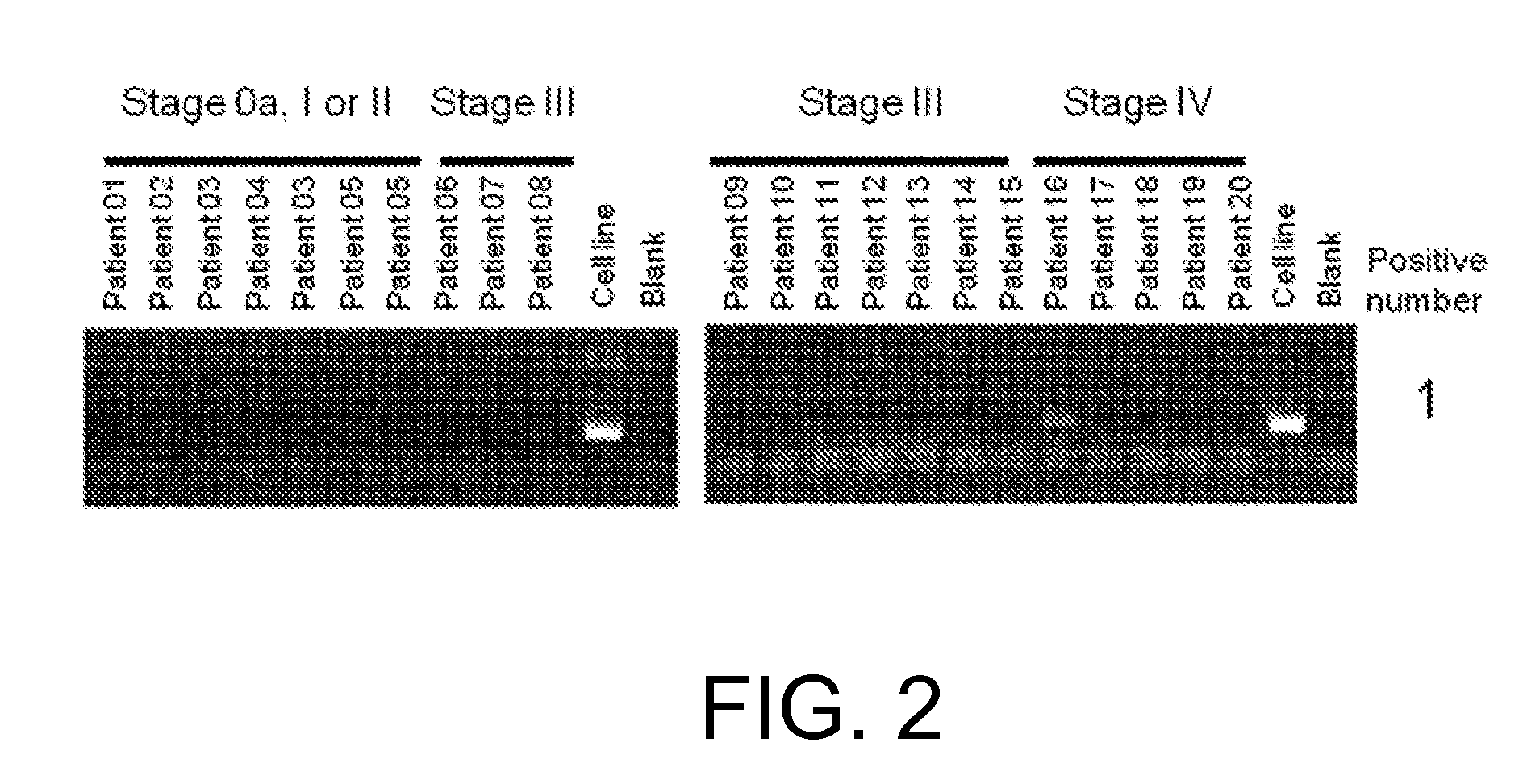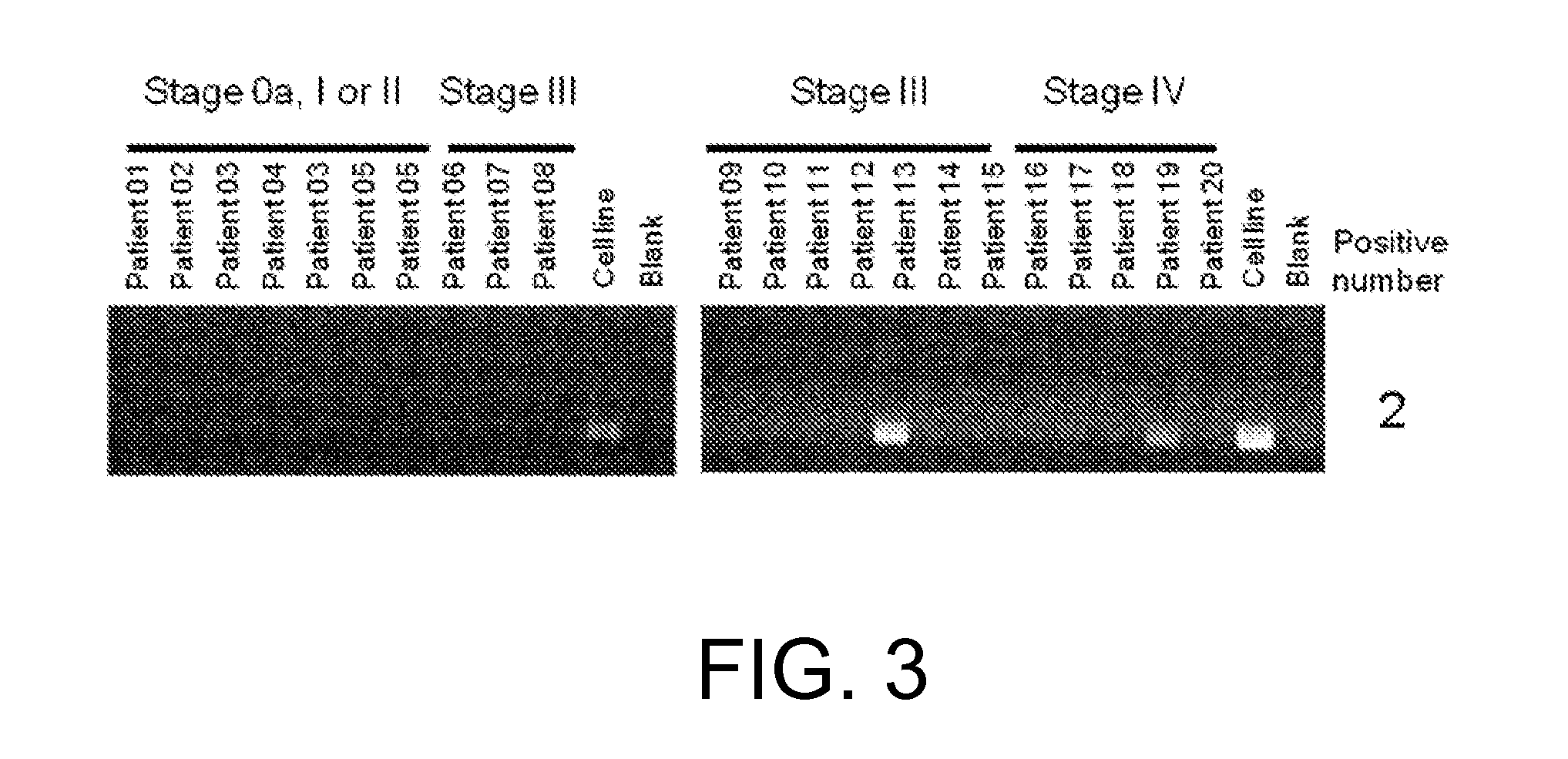Fgfr3 fusion gene and pharmaceutical drug targeting same
a fusion gene and gene technology, applied in the field of fusion polypeptides, can solve the problems of high refractory and lethal cancer, high specificity and antitumor activity, and well known side effects, and achieve high specificity towards cancer, avoid side effects, and high specificity.
- Summary
- Abstract
- Description
- Claims
- Application Information
AI Technical Summary
Benefits of technology
Problems solved by technology
Method used
Image
Examples
example 1
Expression of Fusion Polypeptides Between FGFR3 and Other Polypeptides in Various Cancer Cells
[0654](1) RNA analysis
[0655]RNA was extracted with the miRNeasy Mini Kit (QIAGEN) from each of the four FGFR3-expressing human cell lines derived from bladder cancer, RT112 / 84 (available from European Collection of Cell Cultures (ECACC); catalog No. 85061106), RT4 (available from American Type Culture Collection (ATCC); catalog No. HTB-2), SW780 (available from ATCC; catalog No. CRL-2169), and BFTC-905 (available from Deutsche Sammlung von Mikroorganismen und Zellkulturen GmbH (DSMZ); catalog No. ACC 361). The sequences were determined using paired-end reads (Read Length: 2×75 bp) of the HiSeq™ Sequencing system (Illumina).
[0656]The determined nucleotide sequences were mapped to Refseq transcripts by referring to an existing method (Maher et al., PNAS, Jul. 28, 2009, 106(30): 12353-12358) to search for candidate fusion genes by looking for pairs of nucleotide sequences that are mapped to di...
example 2
Analysis of Various FGFR Inhibitors for their Activities of Inhibiting the Kinase Activity of FGFR1, FGFR2, and FGFR3, and Inhibiting the Cell Proliferation of Cell Lines Expressing the FGFR3-TACC3 Fusion Polypeptide
[0674]1. Analysis of Various FGFR Inhibitors for their Activity of Inhibiting the Kinase Activity of FGFR1, FGFR2, and FGFR3 (In Vitro)
(1) Inhibitory Activity Against the FGFR1 Enzyme
[0675]The FGFR1 inhibitory activities of compounds listed in Tables 1-1 to 1-5 were measured based on their activity to inhibit phosphorylation of the biotinylated peptide (EGPWLEEEEEAYGWMDF; SEQ ID NO: 39) by a human FGFR1 enzyme (Carna Biosciences, cat 08-133). Phosphorylated biotinylated peptide was detected by time-resolved fluorometry using a europium cryptate-linked anti-phosphotyrosine antibody, and streptavidin linked to an allophycocyanin derivative, XL665. The half maximal inhibitory concentration (IC50) was calculated based on the inhibitory rate against the control group which do...
example 3
Analysis of FGFR Inhibitors on their Cell Proliferation Inhibitory Activity Against Various Cell Lines Expressing the FGFR3-TACC3 Fusion Polypeptide or FGFR3-BAIAP2L1 Fusion Polypeptide
(1) Cell Proliferation Inhibitory Activity of FGFR Inhibitors Against Various Cell Lines (In Vitro)
[0684]Six compounds A to F (Tables 2-1 and 2-2), which are substances that suppress the kinase activity of FGFR, were assessed for their effect on cell proliferation in a total of six types of human bladder cancer-derived cell lines: three types of cell lines expressing an FGFR3-TACC3 or FGFR3-BAIAP2L1 fusion polypeptide: RT112 / 84 (available from ECACC; catalog No. 85061106), RT4 (available from ATCC; catalog No. HTB-2), and SW780 (available from ATCC; catalog No. CRL-2169); cell line BFTC-905 (available from DSMZ; catalog No. ACC 361) which expresses the wild-type FGFR polypeptide but does not express the fusion polypeptides; cell line UM-UC-14 (available from ECACC; catalog No. 08090509) which expresse...
PUM
| Property | Measurement | Unit |
|---|---|---|
| size | aaaaa | aaaaa |
| pharmaceutical composition | aaaaa | aaaaa |
| refractory | aaaaa | aaaaa |
Abstract
Description
Claims
Application Information
 Login to View More
Login to View More - R&D
- Intellectual Property
- Life Sciences
- Materials
- Tech Scout
- Unparalleled Data Quality
- Higher Quality Content
- 60% Fewer Hallucinations
Browse by: Latest US Patents, China's latest patents, Technical Efficacy Thesaurus, Application Domain, Technology Topic, Popular Technical Reports.
© 2025 PatSnap. All rights reserved.Legal|Privacy policy|Modern Slavery Act Transparency Statement|Sitemap|About US| Contact US: help@patsnap.com



